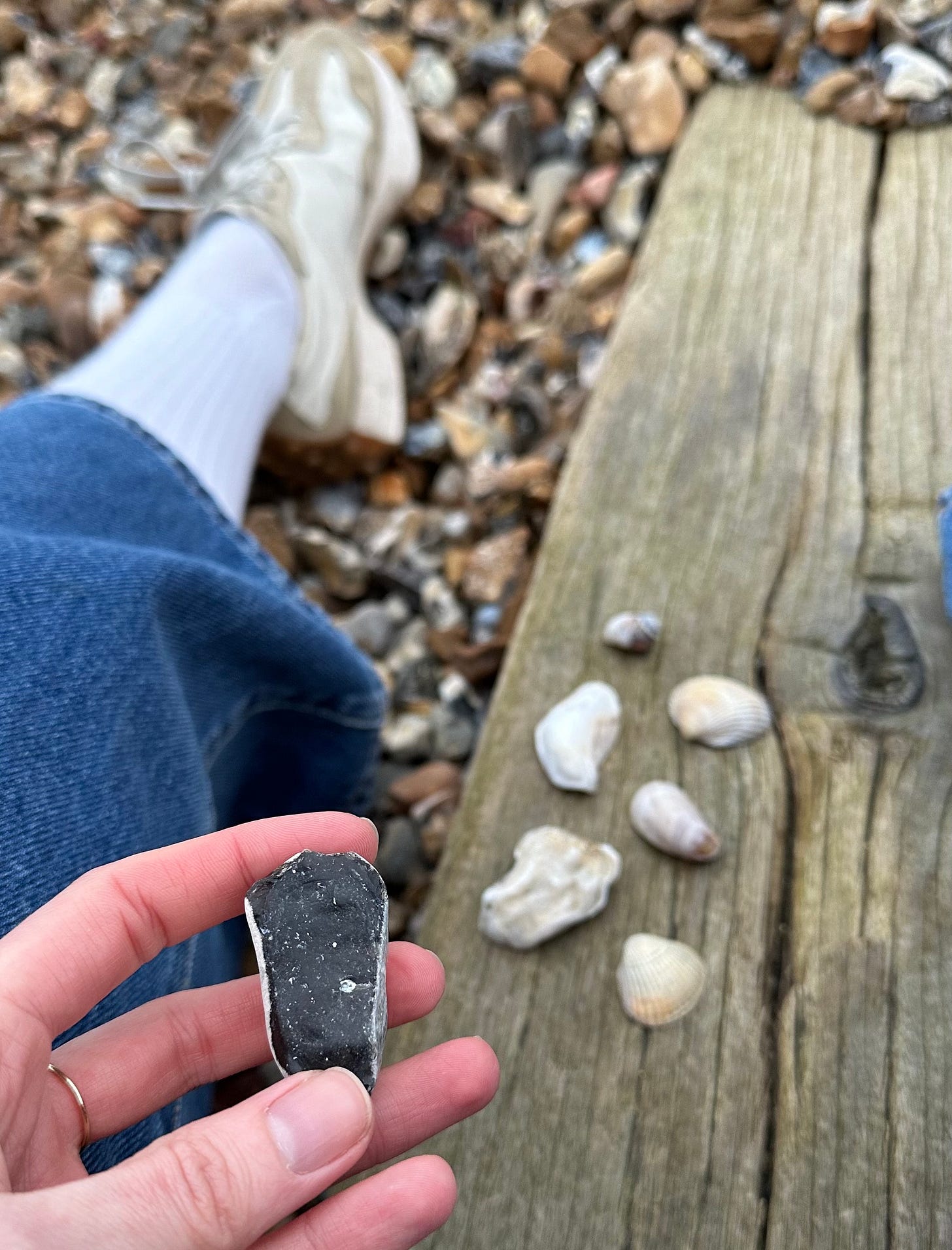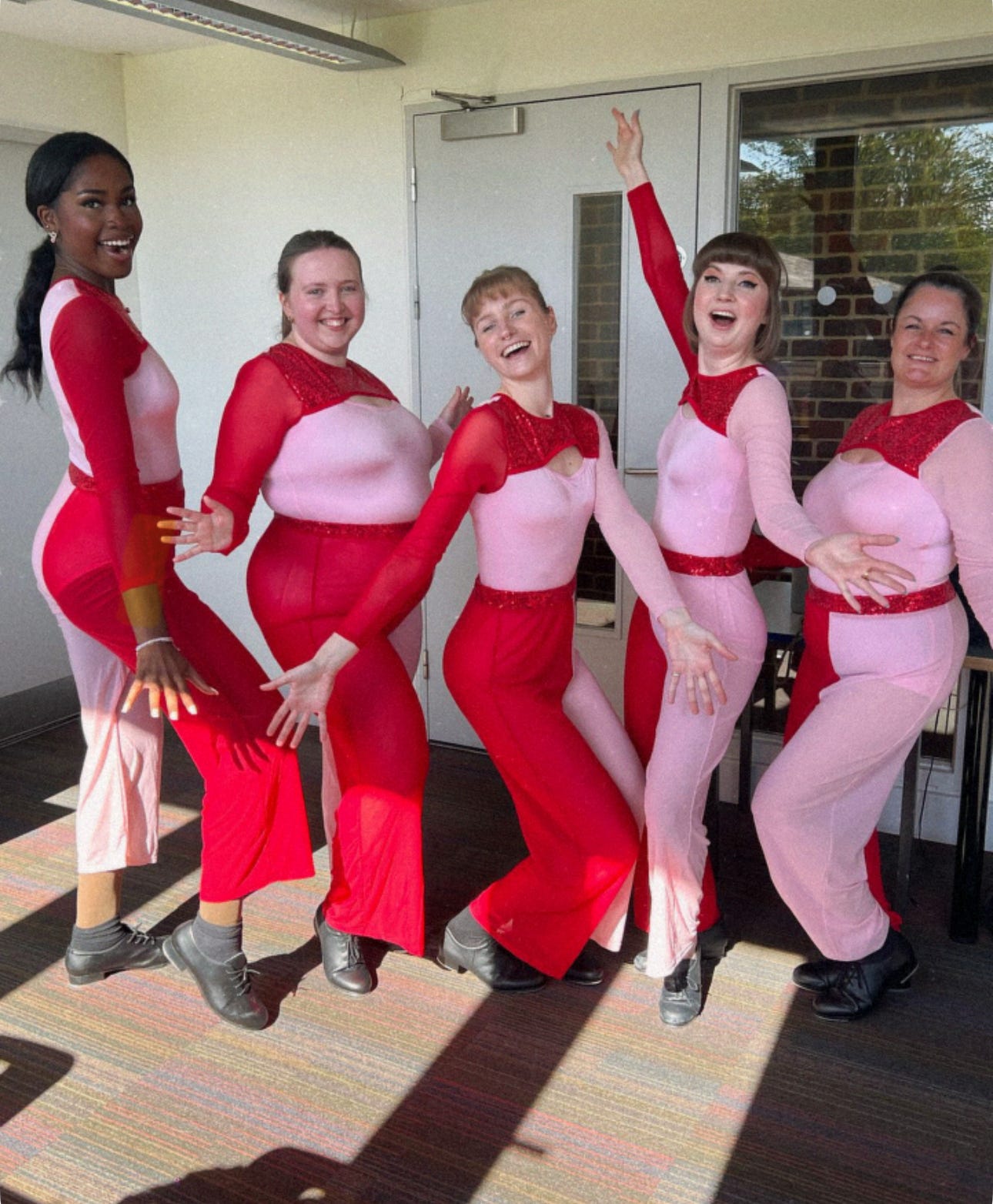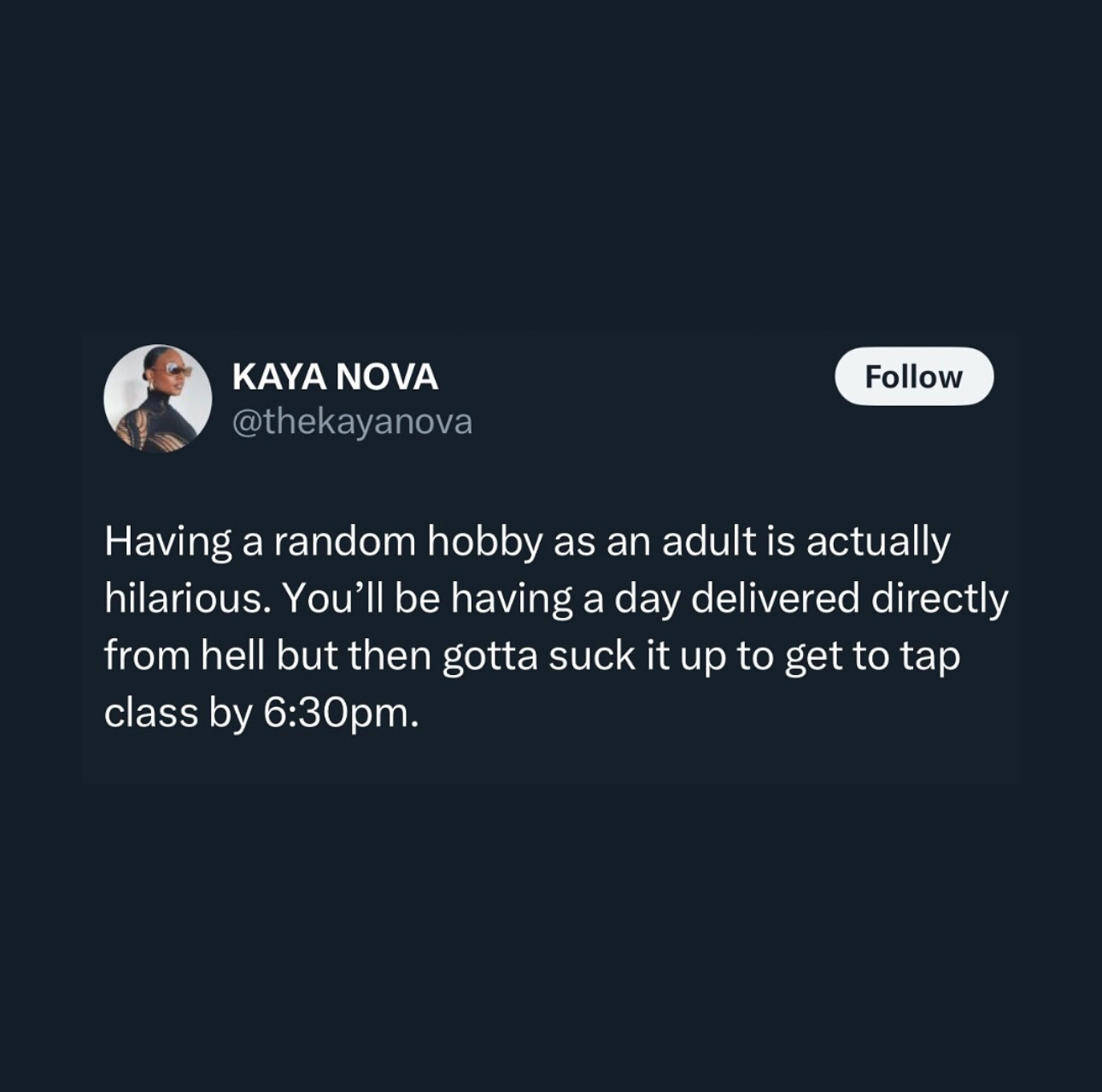You might be familiar with this metaphor about how to prioritise your time: Imagine your life is a jar filled with rocks, pebbles, and sand. The rocks represent the solid foundations: family, love, friendships, good health and such. Pebbles are more transient but still significant elements of your life: work/career, school/education, flats and houses, hobbies. The sand is the small, everyday stuff that plugs the gaps: the books you read, the shows you watch, the tiny, forgettable errands that make up a day.
The lesson, typically, is that if you let your jar fill up with sand first, or if you over-prioritise the pebbles, there won’t be room for the rocks — the stuff that really matters.
A two-step recipe for living life well: Step 1. Prioritise the Big Things first. Step 2. Let everything else fall around it.
Last year, my jar slipped out of my hands. It shattered. Rocks, pebbles, sand — all over the shop.
There are, I imagine, only a few occasions in the average lifespan when a person of average fortune is faced with an empty jar. (And even fewer where that is the result of your own decisions, rather than tragic circumstances beyond your control.)
As I began to confront the detritus and gather things back up, I found that I wasn’t reaching for the rocks first. Instead, I gravitated towards the shiny, well worn, and slightly misshapen pebbles that could fit neatly into the palm of my hand. The Big Things, I decided, could wait.
Before my jar slipped through my fingers, I’d been pinballing between two extremes. On one end, the grand tropes of turning thirty: What do I want from my life? My relationships? My career? Am I on the right path? On the other, the granular grit of getting by in the day-to-day: Did I remember to take the clothes out of the washing machine? How on earth is the dishwasher full again already? I couldn’t find my place on the scale.
The pressure I felt to expand, to live bigger, and add more rocks to my jar became too much. I suppose I ricocheted so hard that the whole container gave way.
At first, I doubted my intuition not to reach straight for the Big Things again. Shouldn't I be rebuilding from the solid foundations up?
But instead, I leant into the pull of the smaller things — the transient, the inconsequential. Two examples stand out. One of them, you’re reading! Spag Mol has been a lifeline (and a form of free therapy) during a very turbulent chapter of my work-in-progress memoir. Since most of you have been tuning in from the beginning (🫶), I won’t go on for too long about that here.
Instead, I want to shine the spotlight on another pebble that has punched well above its weight in providing a centre of gravity these past six months: tap dancing.
I’ve danced pretty much since I became bipedal, attending weekly ballet classes since age 3 until I went to university at age 18. Jean Edwards School of Dance was a local institution in the SE London suburb where I grew up, but nothing like the polished dance studios you see on screen. On Tuesday evenings, I’d trudge down to the church hall at the end of my road, filled with folded tables and benches piled high in the corners, dusty floors and biscuit crumbs left from the nursery that occupies the space in the daytime. For our barre exercises, we’d use the back of blue plastic chairs that are giving ‘school classroom’ rather than ‘Pineapple Dance Studios’.
While I dedicated more time to ballet, tap always had a special place in my heart. I think it’s the focus on rhythm (one of my strong suits) and the satisfaction of making an audible beat with my body and metal-plated shoes. Being actively encouraged to make noise in a society where we increasingly trend towards minimising the sound we make in public spaces feels like a tiny rebellion. My phone is always on silent, and I avoid speaking on the phone on public transport for fear of upsetting fellow commuters. We shoot irritated looks at anyone who plays music or scrolls TikTok without headphones on a bus. Walking down the street, I’m conscious of how loud my shoes are slapping on the pavement. Does the clip-clop of my boots identify me as a lone woman, and therefore, easy prey? Or does a confident cadence of heavy-footed walking assert my dominance?
In tap shoes, the noise says, I’m here to dance Mother Fucker.
Fellow Substack author Ankita (life, annotated) articulates the gravitational pull of hobbies when our lives are thrown out of whack. She calls them temporary obsessions:
The rhythmic movement of needles on wool. The attention to breath in yoga. The wet clay between fingers. The math of turning yeast into sourdough. They return you to the body, to sensation, to the present. Their job isn't to stop the descent into grief or sadness, but to make one conscious of it. They are the tap on the shoulder by the divemaster, the pull towards the surface when we've forgotten which way is up.
I started taking Adult Intermediate tap classes in October, within weeks of a break-up, dedicating my Wednesday evenings to purposefully making sound with a dozen or so other amateur dancers from all walks of life. Last weekend, I made my tap dancing renaissance public at the school’s annual recital — a show where 350 students took to the stage across the day to impress parents, performing dance styles from ballet to contemporary jazz, and ages ranging from barely upright toddlers to adults who are starting to trend in the opposite direction.
Somehow, I convinced nine people to come and see me perform for a mere two minutes out of a one-hour show. Or rather, they convinced me to let them come, because they were so intent on seeing me perform, selflessly donating a core chunk of their sunny spring Sunday to sit in a dark school theatre and applaud strangers.
Who would’ve thought that my Silly Little Hobby™ would draw such a crowd? We were far from perfect on stage, but every shuffle-hop-step and stomp felt like a reclaiming. Of movement. Of space. Of joy.
But it’s not necessarily what happens in the studio/on the stage itself that has affected me most, as what it symbolises in the context of my jar: a bigger surface area. My weekly tap class takes up only 1 of 168 hours, but it has incredible mileage in conversation beyond that. Friends and colleagues are continuously asking how this week’s class was, what moves or routines I’m learning at the moment, and if I’m going to keep it up.
It’s easy fodder, like they’re temporarily taking my pebble to sit on top of their own jar, like a little stowaway they can share in for a moment, and then remove when they’re done.
And the beauty of hobbies like this is, they’re reciprocal. Picking up on the scent at pub drinks recently, a friend redirected the conversation completely out of the blue to show me photos of her high-fidelity colouring — getting her phone out to show me pictures, proudly explaining the shading techniques she uses, and the intricacies of specific alcohol markers that don't bleed. I have no intention of taking colouring up myself, but that’s besides the point. It added a texture to a friendship that otherwise revolves around templated conversations about life milestones, work, and holidays. Here, she was saying. Come and look at some of my pebbles. Aren’t they lovely?
The very things we dismiss as ‘small’ and lower priority in the context of our lives — that the analogy says should be the last things to go in the jar — are often the things that create more space for connection. They do so because they expand our surface area. A tap-dancing class might seem insignificant compared to a romantic relationship, but it's an open door for someone who doesn’t have a stake in your jar to latch onto. It's a point of connection. The Big Things in life have more weight to them, sure, but the small things are often what let others into our orbit.
To understand why, think of the jar analogy again. A jar full of pebbles offers far more total surface area than a few large rocks. More sides to touch. More chances to come into contact.
In cellular biology, this is articulated in a principle called surface-area-to-volume ratio. As a cell grows, its volume increases much faster than its surface area. Beyond a certain size, the cell struggles to function — it slows, loses efficiency, and eventually, can't sustain itself. The bigger the volume, the more surface area is needed to sustain its functioning.
I’m no single cell, but I am made of 30 trillion of them. Why should I be an exception to this rule?
It plays out in social settings, too. There are limits to how much outsiders can truly connect with our rocks. Since being outside of coupledom, I’ve noticed this in how much I’m able to authentically engage in the relationships of friends around me. I used to be fluent in the same language of Whose parents are we having dinner with this weekend? and, How should we divide up our annual leave this year? But in a matter of months, I’ve lost my mother tongue. These things live deep in volume. There’s too much packed into them, and not enough surface area for an outsider, like me, to latch onto.
When I published my essay about pinballing between the cosmic and atomic scales of adulthood, nearly nine months (or rather ironically, a human gestation period) ago, one reader kindly recommended a podcast episode that I only recently got around to listening to. In it, the hosts solicit the help of experts to work out: What is the most average-sized thing in the universe?
I won’t spoil the conclusion, because in my opinion the full episode is 30-minutes is worth a listen, but I will quote at length a part towards the end that sent many of these thoughts freewheeling in my mind. In a curious turn of phrase, partway through the speaker starts referring to the cells as “you”, which felt as if he was speaking directly to me:
There are certain kinds of physical events that happen differently if you're small than if you're big.
And there's an argument out there that, cells being the basic unit of the way life functions — making energy and getting out waste and doing all the things that a body needs to do — you can't be much bigger than the cells are because you have to have the right amount of surface where they're sending things out and bringing things in and interacting with the world given what you've got going on inside.
So, it might be that this average middle size is actually ideal to allow this very rare precious thing, which is life, to even happen in a cold, cold, bit of empty space.
Sometimes, when life shrinks down to a more average size, what we need is more surface area, not more volume. Finding connection, meaning, an anchor — what that looks like changes depending on “what you’ve got going on inside,” and it doesn't always mean putting the big rocks back in the jar first. Maybe they can sit out for a while.
Maybe a jar full of average-sized pebbles, covered with a thin skin of sand, is plenty.
This essay was (in part) inspired by:
📝 What Limits a Cell’s Size? by
🎧 The Middle of Everything Ever by Radiolab
🧪 Science








This way of writing, of communicating, from tap to biological cells.... probably one of the best things I've read in a while.
What an absolute treasure this was to read, wish I could like it more than once for the amount that resonated, honestly! Annnd now I wanna tap dance through life too - getting back to dance class is so fun 🤝